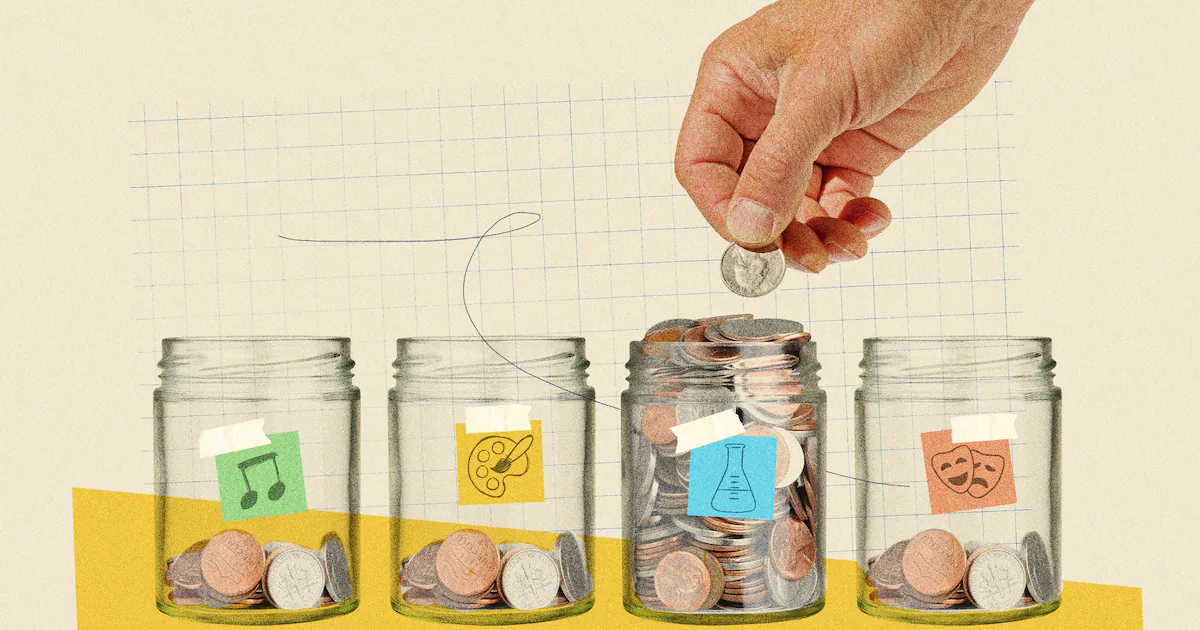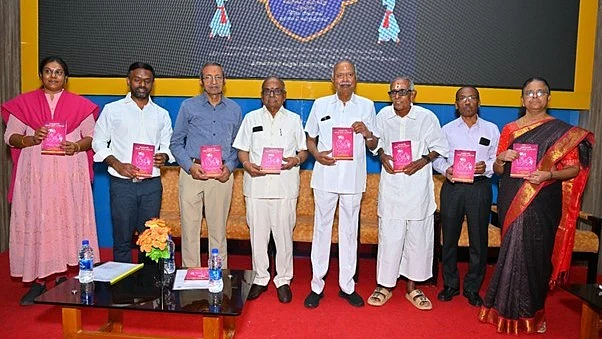Copyright Salt Lake City Deseret News

House Bill 265 — the so-called “Higher Education Strategic Reinvestment” measure — has dramatically altered operations at Utah’s eight public degree-granting institutions. Earlier this year, the Utah Legislature cut 10% from each school’s budgets — then allowed them in subsequent months to recapture those withheld funds if they successfully “reinvested” in programs determined to be of highest value to both students and Utah’s economy. HB265 proponents say the historic legislation fosters opportunities that will benefit Utah students — professionally and personally — in a fast-evolving, high-tech world. But each school’s reinvestment plan has exacted pain. While hundreds of new employee positions are being created, hundreds are also being eliminated. Meanwhile, academic programs and course offerings have been dramatically altered across Utah’s higher education institutions — with aggressive reinvestment happening in health care, STEM and AI. No surprise, HB265 has fans — and opponents. The Deseret News asked several lawmakers and educators to share their opinions and insights on the historic legislation that will likely impact higher education in Utah for years to come. The question posed to each: “Is higher education in Utah better off than it was a year ago?” (Some responses have been edited for length.) Utah lawmakers Utah House Speaker Mike Schultz, R-Hooper “Utah set out to do something different — and it’s working. “Our higher education system is stronger today than it was a year ago because we made a conscious choice to put students first. HB265 has delivered exactly what we hoped for: More efficiency, more opportunities for Utah’s students, and a better connection between our campuses and Utah’s workforce needs. “Our colleges and universities took on the challenge, identifying $23 million in administrative costs and reinvesting those savings to expand high-impact opportunities for students in engineering, health care, business and technology. “Best of all, it’ll make higher education more affordable, helping students graduate with less debt. Utah is leading the way in showing that higher education can be both forward-looking and fiscally responsible. “When we stay focused on students, accountability and outcomes, everyone wins — students, taxpayers and our entire state. And we’re just getting started.” Sen. Kathleen Riebe, D-Cottonwood Heights, a public school teacher “I do not believe Utah higher education is better off. “First, education is our largest employer in 23 counties. In our smaller counties, where Snow College and our Utah State University extensions (operate), this has been a tremendous setback. “Second, Utah State University was the only university that did not have their budget OK’d because of their previous president — and that president is not picked by Utah State University alone, but vetted by a committee. “Third, universities are competitive with their peers across the country, and we are continually in the news with education bills that are harmful to the autonomy of an institution of higher learning. Nonresident students pay a higher price and create a windfall for our universities, and I believe this will be a detriment to attracting the best and the brightest to our schools. “Fourth, these cuts overwhelmingly were to humanities and social sciences classes. In our committee hearings, many of us voiced our disdain for taking away classes that build critical thinkers, and I believe this targets those classes at a higher rate than our other sciences. “Fifth, nothing in the bill said that they could not target sports — as we have passed bills to fund the NIL programs to bring the best in the brightest to our sports programs. We did not do anything to cut those budgets by 10%. “Lastly, we could have cut by attrition — draw downs to not encourage new students in those programs. Our universities do amazing things, but to force students to attend a university far from where they live is exactly the opposite of what we are doing to promote rural schools, rural communities and rural success. Leaving that community to attend another university has a high percentage of not returning.” Senate President Stuart Adams, R-Layton “When the economy shifts and industries evolve, Utah doesn’t wait. We lead. That’s what sets us apart. That’s why Utah is the best state in the nation. We understand what the future demands and why we’ve prioritized industry-driven degrees that directly align with the needs of our fastest-growing sectors. “Since the passage of the recent legislation just a few months ago, we’re already seeing real results with strategic reinvestment plans approved by the Executive Appropriations Committee last month. Utah’s colleges and universities are adapting their programs to meet real-world demands. “We’re not just preparing students; we’re powering Utah’s economy for generations to come. We’re keeping our workforce competitive, adaptable and ready for the future. I appreciate higher education institutions for their commitment and partnership.” “HB265 created a fundamental shift in how our colleges and universities operate, refocusing our efforts not only on better use of tax dollars and tuition, but also on evaluating the programs we offer. “Each institution identified ways to operate more efficiently, redirecting resources from administration back into the classroom. More than 85% of reinvested dollars — nearly $52 million — are now flowing directly into classroom instruction and research. That’s a win for Utah students. “Because of HB265, our colleges and universities are investing tens of millions more into degree and certificate programs aligned with Utah’s workforce needs — producing stronger outcomes for students without raising taxes or tuition. This means more highly skilled nurses, engineers, and mental health professionals entering Utah’s workforce. “When we put student outcomes first, it’s good for families, communities, and the future of our state.” College professor and Senate Minority Whip Karen Kwan, D-Murray “It’s a mixed bag. The higher education reinvestment forced institutions to look for efficiencies. That’s always a good thing. But the work was not completed in a systemic way — and it was meant to be done quickly without the full systemic input of faculty, staff, industry and students. “Do we have the desired (student-demanded) offerings in every region of our state now — and those that students will demand in five years? In 10 or 20 years? That’s hard to say because the workforce changes quicker than we know. “So the work in reinvestment really needs to be an ongoing, system wide conversation. One that can be nimble enough to change with student demand, industry needs, and faculty expertise year-to-year. And it should never have been tied to funding. Curriculum review and elimination should be carefully considered with expert input that is free of having to cut programs for the sake of hitting an artificial funding goal. “That pits academic programs against each other in a sort of institutional ‘Hunger Games.’ “This leads some faculty and staff to be confused about their future and their ability to speak out freely. That’s not good. Faculty should feel secure with their academic freedom, but HB265 and the national conversation pitting funding against academic freedom has had a negative impact on curriculum and student resources — the extent of which, in Utah, we will see in the HB265 report due in November.” “HB265 marks a positive step forward for our state’s excellent higher education system. It prioritizes programs that deliver the greatest value to students, ensuring graduates enter the workforce well-prepared. “While many of its changes are still in the early stages of implementation, the bill has been well-received by higher education institutions and educators, who are preparing for a thoughtful and effective rollout. “One notable change already underway is the option for fast-tracked three-year programs, which require fewer credit hours and allow students to gain real-world experience earlier in their careers. “Just a year ago, resources were stretched thin across both high- and low-demand programs. Now, with clearer priorities and targeted investments, Utah is better positioned to support what matters most: our students, educators and future workforce.” Utah educators University of Utah President Taylor Randall “Yes, I believe the University of Utah is stronger and better positioned than it was a year ago. “HB265 challenged us to ask hard questions about efficiency and alignment with workforce needs — accelerating our own efforts to achieve ‘operation excellence’ through data-driven solutions to advance our Impact 2030 vision. “Meeting the Legislature’s $20.5 million reallocation and reinvestment mandate was not easy, but it has helped us adopt the right lens moving forward — one that keeps our focus squarely on serving students, supporting Utah’s workforce, and maximizing our impact across the state.” Jim Mortensen, Utah Valley University vice president of Finance and Auxiliary Services “Because we receive one of the lowest levels of state funding per student while serving the most students in Utah, UVU has built a strong record of using taxpayer and tuition dollars wisely. “HB265 supports the careful, data-driven way we make tough budget decisions — and we are grateful for the backing of our campus community and the trust of the Legislature as we focus on student success and Utah’s workforce." Utah State University Interim President Alan L. Smith “While the strategic reinvestment planning process required thoughtful and important decisions on an accelerated timeframe, it has positioned us to ensure we are preparing students for fulfilling careers while meeting our land-grant mission of learning, discovery, and engagement. “We look forward to the Utah Board of Higher Education naming USU’s 18th president and revisiting our plan for approval.” (Note: Utah State University’s final strategic reinvestment plan will be examined by the school’s new president, once hired — and then presented to the Utah Board of Higher Education for assessment.) Paul Morris, Utah Tech University vice president of Administrative Affairs and co-chair of the school’s strategic reinvestment committee “We believe the reinvestment process will benefit higher education in Utah, but it is too early to say. “Utah Tech University has started to implement reductions, decreasing the number of administrators. We look forward to relocating those funds to increase the number of full-time faculty in classrooms.” Utah Commissioner of Higher Education Geoffrey Landward “Yes, I think our higher education system is on a stronger trajectory today than a year ago. “The implementation of HB265 complements our ongoing systemwide review processes to ensure programs remain aligned with workforce demand and institutional roles and missions. “These efforts help institutions make data-informed decisions about where to reinvest resources and how best to meet Utah’s evolving educational and economic needs. The changes over the last year have only helped us strengthen programs and better serve students and the state.”



